#which way western cartoonist
Photo

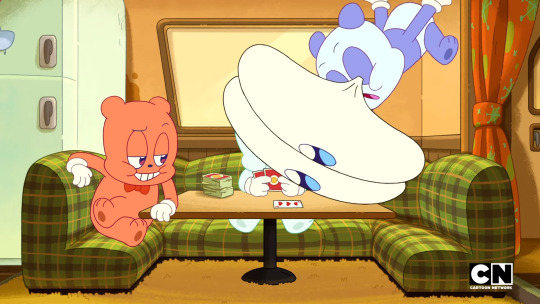
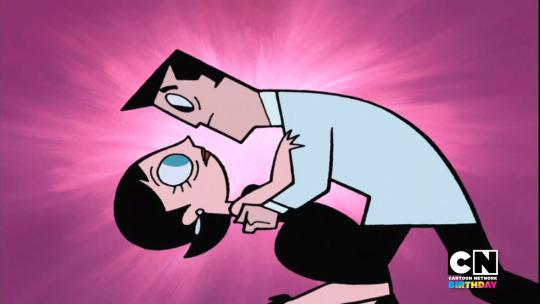
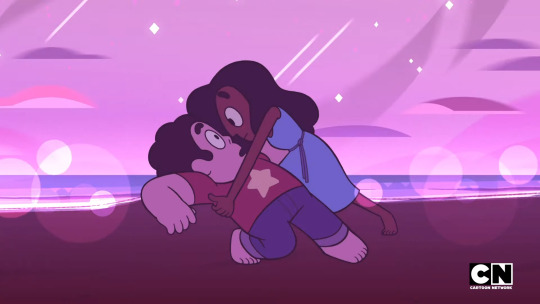


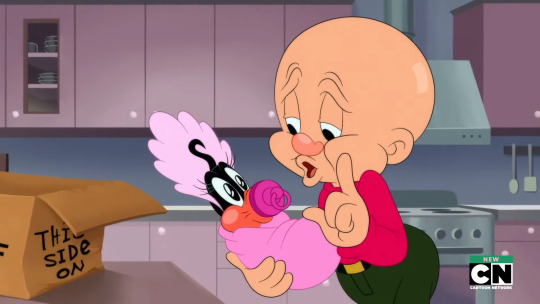
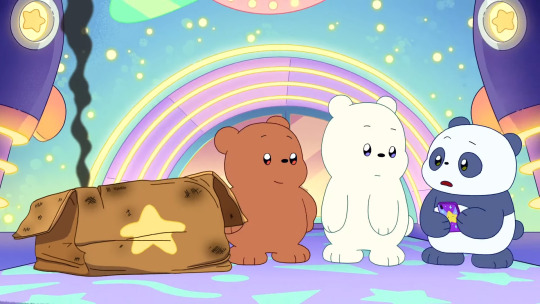

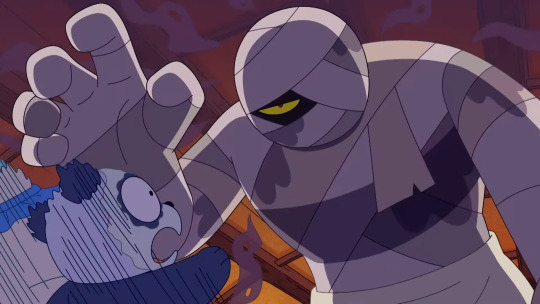
which way, Western Cartoonist? The 5th Batch
Looney Tunes Cartoons or Looney Tunes Bears? [tweet]
Keen on Keane or Alone Together? [tweet]
Bugs Bunny and the ladies or Baby Grizz and the ladies? [tweet]
Baby Daffy Duck or We Baby Bears? [tweet]
Menacing Massaging Mummies! [tweet]
#which way western cartoonist#which way western cartoonist?#looney tunes cartoons#looney tunes bears#we baby bears#who crashed the rv#who crashed the rv?#basket bugs#looney tunes#merry melodies#wb 100#cn 30#fowl ploy#keen on keane#alone together#steven universe#the powerpuff girls#ppg#powerpuff girls#sam-merica#mummy dummy#bath on the nile#the big wish#cartoon network
9 notes
·
View notes
Note
plz share your miku essay 👀
DISCLAIMER. this was written in the throes of 2020 lockdown fever and it shows lol
THE GIRL WHO’LL LIVE FOREVER
until tonight, i didn’t know hatsune miku wasn’t real. my hazy assumption was that someone ‘played’ hatsune miku in the same way that mark ruffalo plays the hulk - i thought there was an actress out there who provided the basis for her body and voice. i was right about one of these things, but only accidentally, and remarkably wrong about the rest of it. i am writing this because a) i have literally nothing else to do and b) because i thought the rabbit hole i just fell down was really cool! cool, strange, fascinating, and also kind of sad. anyway. close your eyes and pretend it’s 2007:
yamaha’s vocaloid software is grounded in the concept of ‘voices’. there’s the VOCALOID program itself, the act of writing music that can be played by a machine, and then there are the voices you can use to synthesise it. in 2007, there were 3 voice banks available: a western voice bank named ‘sweet ann’, CV01, and CV02.
CV01 (character voice 1) was developed by crypton media as the first japanese voice bank. character voice 1, as names go, is not particularly appealing - so to increase interest in VOCALOID software and attract a userbase willing to learn it, the team behind CV01 decided to put a name and a face to the voice they’d created. it went, from what can be discerned via google, the wayback machine, and a scattering of translated interviews, something like this: hatsune miku’s voice was based on vocal samples given by saki fujita, a well-established voice actress and living human being. the voice bank itself was built by designer wataru sasuski. her physical appearance, including her iconic outfit and improbably huge aquamarine pigtails, were created by kei garou, a cartoonist and illustrator. everything else was left intentionally as a blank slate - and in the ensuing years, her cult following of fans have risen to the challenge of filling in the gaps. for better or worse.
one of the few canonical facts about hatsune miku is her age. she is, according to her creators, a sixteen year old girl from a distant future where music was forgotten. her outfit reflects this, styled in a fashion reminiscent of seifuku-style school uniforms: skirt, shirt, stockings, and a tie. i did not know there was a specific word for that until just now. anyway - hatsune miku was sixteen in 2007, and she has been sixteen ever since.
i have watched… more than a few vocaloid AMVs tonight! the oldest ones resembled a cross between second life and final fantasy 8 cutscenes - bizarre, rigid avatars performing bizarre, rigid choreography in a number of inexplicable locales, such as endless fields of wheat, a gothic cathedral, and (most memorably), a busted nuclear reactor - but eventually i reached the live recordings, which is where things graduated from funny-weird to weird-weird. the production value, compared to those early videos, was off the charts. the songs, as far as i could tell, were the same. this is often lauded as one of the most unique, inimitable facets of the ‘miku experience’ - her songs are written (and choreographed) by her fans. world is mine, one of her most popular live performances at 8 million hits, started life as one of those stilted, second life-esque animations.
so miku’s songs are written by her fans. hatsune miku, the character, the experience, the mythos - is collectively created by her fans. which begs the question: who are her fans? who created the youtube videos? who has the time, resources, and sheer dedication necessary to create AMVs for an ever-young, ever-pleasant, angel-voiced teenager, with a sylphlike body and a skin tight school uniform?
i didn’t make the connection, at first. maybe this was naive of me. while absorbing the first few miku live videos, hearing her babytalk, watching her perform - my initial assumption was that miku audiences would primarily be teenagers (and their grim-faced parents), people who could relate to miku as an aspirational ‘peer’. her dance moves, especially, led me down this route - is fortnite still big with the youth? i’m 22, i have accepted that my days as someone who knows What’s Big With The Youth are behind me, but i still hear vague echoes from time to time. fortnite dances. tiktok. hatsune miku. etc. what was i saying. oh yeah. miku dances with a camera in mind, the way a tiktok influencer dances: effervescent, front-facing, with hand gestures that beg to be imitated. the more i watched her the more i recognised the unnerving, uncanny quality emanating from the stage. i realised where i’d seen it before. we live in a remarkable age of animation: where AAA studios are creating death scenes so realistic they can provoke a trauma response in the people animating them, where a horse’s bollocks will infamously shrink when exposed to pixel snow, and where hatsune miku dances with unerring, flawless fluidity, while the gleaming stage lights fall perfectly on her virtual body.
she looks so at home in 3-dimensional space, especially in the newest videos, it's easy to forget she isn't there. she looks real. like you could touch her. she will never, of course, be real. you will never, of course, touch her. but you can touch her in other ways. you can write songs with her voice and make her dance to them; you can manipulate the movements of her body, every minute bob of her pigtails, puppet her, propel her. is that the appeal? is that why her audiences look the way they do? i am thinking about tabula rasa and whether the miku slate was ever truly blank. it makes me sad. there’s something poignant about the intersection of humanity and technology that vocaloids represent. they were the first crossing of a border that will continue to be crossed for the rest of the 21st century. in a virtual age, with virtual bodies, what constitutes as ‘real’? where, and how, do we draw a line?
to my surprise, there is a miku song i genuinely like: ‘miku’ ft. hatsune miku, by anamanaguchi. the music video strips the avatar away and leaves the voice bare, nothing but the blood and guts of a vocaloid, synthesizers and computers in an empty recording studio - and this nakedness simultaneously dispels and intensifies my discomfort. it reminds me that the miku vocaloid is more than the sum of its parts. despite the controversy surrounding the fanbase who propeled hatsune miku to fame, there is still something undeniably compelling about this. about her. maybe it’s that animal hindbrain piping up, pricking up the hairs on the back of my neck: this is not a human voice. this is something other, something new. the lyrics do not shy from this. miku, miku, what’s it like to be you? followed by, play me, break me, make me feel like superman, you can do anything you want - and, most poignantly, you found me here inside a dream, walk through fire straight to me. fire walk with me. miku’s existence is a lynchian fever dream; and what’s more, in this song, she knows it. i’m not saying hatsune miku and laura palmer need to be compared and contrasted. but i’m also not NOT saying that. i am saying that this song, like every other miku song, is the catchiest song in the world. like it was developed in a lab to be an ear worm. i suppose, in some ways, that’s the point.
#as a reminder to anyone reading this I HAD NOT BEEN OUTSIDE FOR DAYS. i was not SLEEPING. i wass DEPRESSED. i was REWATCHING TWIN PEAKS#ask#anonymous
44 notes
·
View notes
Note
I thought Keikenchi was the screenwriter for Redline and Hirano the cartoonist.
the relation between writer and artist when it comes to manga is... weird, especially when trying to pin down who's responsible for the characterizations. hirano and keikenchi's process seems to lean towards plot script rather than full script, which would mean that hirano is given an outline of the plot beats to hit, storyboards it, and then passes it to keikenchi for approval
even though they don't explicitly clarify that it's plot script in any interviews, given that hirano works on multiple projects at any given time (a common use case for plot script in the manga industry, inherited from its use for the same reasons in western comics) and seems to describe plot script in his interview about Redline, it does seem to be the most likely answer
this is important because, in the context of other things hirano has written, okita skews more towards a "hirano character" in redline than anything else
it could just as easily be in large part due to keikenchi writing to accommodate hirano's pacing, or maybe that hirano works closely in the writing process. either way, something about his absence causes okita to become a less interesting character, even in comedic scenes
36 notes
·
View notes
Text
STATUS: 02.05.24 | 🌘 | 1°C | 🌨️ | Tired 🥱
I started a new comic project this week. I just need to figure out the size and style I’m going to make it at.
To figure it out, I doing page one in three different ways:
Digitally
Traditionally Manga Size
Western Sized, but on watercolour paper with watercolour paints and archival inks.
I’d like to do 80 pages, but I’m ready to do up to 120 pages by the end of June. I just don’t know if I’m going to collect it and self publish a book or give it away on WEBTOON.
Part of me asks:

I’ve been looking for other artistic outlets, which lead me to Threads to ask:
I’m trying to give Threads a chance, so I out out the following to get the algorithm to give me what I want:
In other news, I started reading One Piece this week. It looks like there are a few books out already. It’s gonna be an expensive book to get caught up on. I need to fine a series that is just getting started. I need to get in on the ground level.
3 notes
·
View notes
Text

I said I was going to read it, and I read it.
And now I know why no one else has in 55 years.
Spoiler Alert: he doesn't actually electrocute Clark, and was never going to. Utter bullshit.
The only cool things about this old guy are 1) his name is Homer Ferret, and 2) he looks like George Burns.

What is uncool about this guy is that he is an optometrist who has been stalking Clark Kent since he was a baby, for reasons he never goes into.
Like, he is just at the Kent's house when Baby Clark does his first heroic thing (pushing a runaway train car off the tracks). He is also suspiciously at the high school when it catches on fire, to see Clark jump into a bush from which Superboy then emerges to blow the fire out.
Did Homer start the fire? If not, why the hell was he hanging out at the high school? We never get answers to these and many other questions.
My favorite part is where he guesses (correctly) that Clark is Superman, based on his glasses. But not in the sane way of noticing that Clark Kent looks exactly like Superman if Superman wore glasses. Remember, no one in the DC Universe can apparently do that. Instead, as the only optometrist in Smallville, he knows Clark Kent never bought glasses from him. Once he has Clark strapped to the chair, he looks at Clark's glasses and realizes the lenses are just fake plastic ones (this was back when glasses actually contained glass).
Clark, as usual, just fucking lies and says he wears fake glasses because he is a giant coward and figured glasses would make kids bully him less. Because that is how that works.
Homer doesn't buy it, either, and so demands Clark admit he is Superman or get juiced. At the last second Clark FINALLY decides to use his X-Ray vision to look through the floor, where he sees that the generator attached to the chair is a low voltage one. Homer throws the switch and it tickles Clark with like 2 volts.
Then Homer admits he wasn't 100% on Clark being Superman after all, so wasn't going to risk killing him. Clark says "oh, you!", and decides to do a Daily Planet report on all the Superman artifacts this clearly dangerous obsessive has collected into a Superman shrine in his basement.
No one gets punched a single time.
The only good thing about this story is this random full page portrait of Clark Kent looking vaguely upset:

The other story in the issue is better, in that it is way, way dumber.
It starts off showing you how YOU TOO can draw Superman!
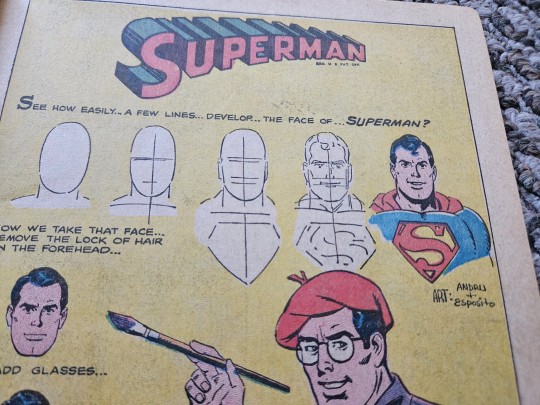
I feel there are a few steps missing here, but
Jimmy Olsen tells Clark how he is joining an art correspondence school, and Clark IMMEDIATELY decides it is a scam worthy of Superman's attention. And sure, it is definitely a scam being run by mobsters. But the second half of that is not remotely true.
Before he starts using X-Ray vision and perfect recall and telescopic vision and TIME TRAVEL (yes) to "solve" this crime of low-level mail fraud, he has to interview a kid who wants to be a cartoonist at the Daily Planet. Where he says this:

I think I get what he's supposed to be saying in this weird attempt at 60s Mod talk, but it took me awhile. You give it a go.
He also is a total dick about how much this child's comic strip sucks.
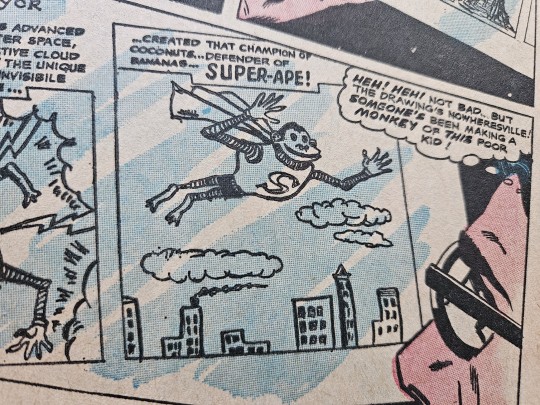
I mean it's no Silver Age Superman comic, but they can't all be, Clark. And let's be honest here, the bar is pretty low.
At some point in his "investigation" of this scam art school, Clark decides the best plan is for him to create forgeries of classical Western paintings. By this point he already has more than enough evidence to have these guys arrested, but he didn't get to do any pointless TIME TRAVEL yet (yes), so, priorities.
He flies back in time to study the painting techniques of the great masters. But he is bad at time travel (yes, literally), so he accidentally flies through the tail of Halley's Comet, which makes him 1) 16, and 2) blue.
Then this happens:
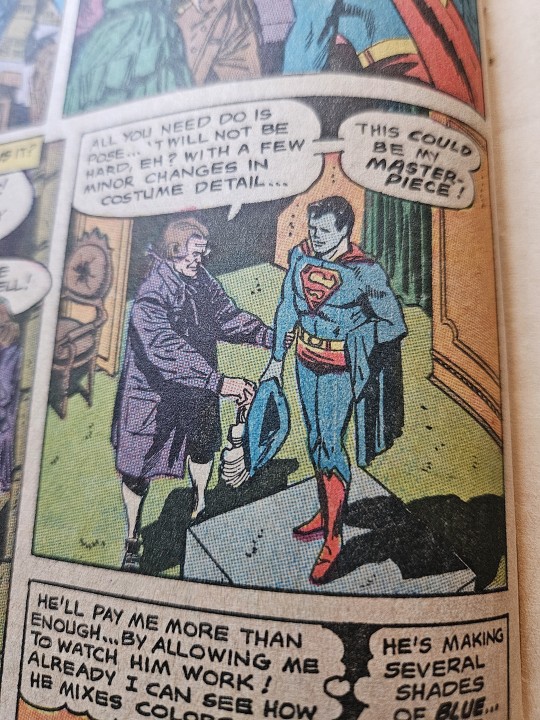
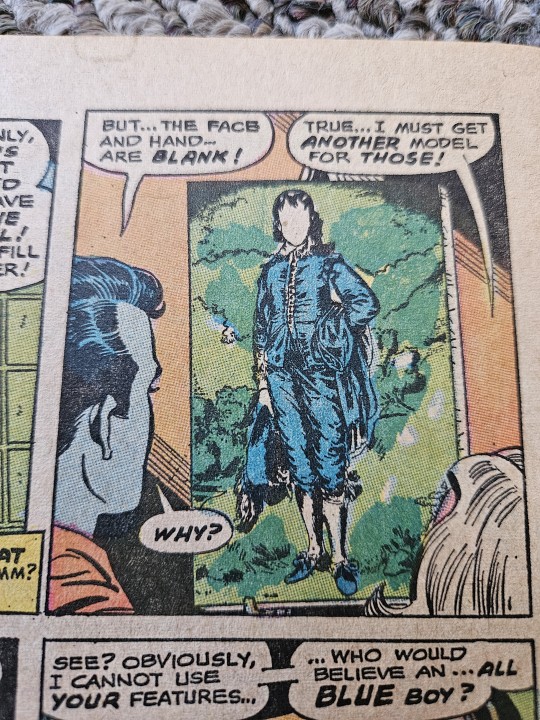
Let's unpack this.
1) Superman was the inspiration for Thomas Gainsborough's "Blue Boy," because he at this point is a boy, who is dressed in the mostly-blue Superman costume. ...But also because his skin is blue. You know. Unlike the boy in the painting.
2) Gainsborough uses Superboy as a model, in that he has him pose, holding a hat. But the boy in the painting is wearing a completely different outfit of rumpled velvet. So Gainsborough just did the complex outfit from his imagination, but he needed Superboy to show him what a boy holding a hat looks like? What bizarre level of "master artist" is this?
3) He doesn't paint the Blue Boy's skin, because Superboy has blue skin, and that would be too weird. And while he can obviously do imaginary clothes fine, he needs another model with normal-colored skin to do a face and a hand. ...Even though he only chose Superboy as a model in the first place, partly because he has blue skin, which makes him a 'Blue Boy,' which is what inspired the whole painting in the first place. ...Except he never intended to actually make the Blue Boy blue-skinned. So...
Adult men with families and mortgages wrote this.
After this, Superboy flies back through Halley's Comet's tail, restoring his age and color. Then he goes to visit Rembrandt, where Rembrandt ACTUALLY DRESSES HIM IN A PERIOD OUTFIT, to use him as a model for one of the figures in "The Night Watch". Because Superman is so muscular.
Because, as everyone thinks when they see that painting, "Man. That one guy in the hat is buff as shit." (?)
Notably, yet again, the painter doesn't paint Superman's face, this time because a officer of the REAL Night Guard paid to have his portrait put in the painting. But I guess that guy's body wasn't all swol and hot enough for Rembrandt's painting...of that specific guy.
"WHAT DOES ANY OF THIS HAVE TO DO WITH GETTING THE POLICE TO ARREST THE MOBSTERS RUNNING A SCAM ART SCHOOL??"
Good goddamn question.
Superman comes back to the present and creates perfect forgeries of the two paintings he was inexplicably involved in creating. When the mobsters try to sell them as the real paintings, Clark Kent shows up with the cops and points out how the forgeries aren't actually perfect, he made them slightly different to prove they were fakes.
And this somehow is a crime the mobsters get arrested for. Instead of Clark Kent, who very obviously painted the forgeries so that these guys could sell them. Like, that was their plan, that the heretofore whatever Daily Planet reporter Clark Kent is suddenly such an amazing artist that he can make near-perfect forgeries of great paintings. And Clark went along with it, until he stopped. And this finally proves their art school is a scam. Even though the building they are in literally has trashcans full of art submissions they have thrown out once they take the registration money out of the envelopes. And all the secretaries working for them know the whole plan and have been helping them do it.
I'm not inferring that. That is all specifically shown in the comic.
None of this was necessary. Absolutely none of it.
On the plus side, at the end, the Daily Planet hires that kid to do his monkey comic. But just the writing, because Clark still thinks his art sucks. Jesus Christ, Clark.

Here is an ad for a hobby model of what was at the time an 11 year old station wagon.
I'm not being sarcastic! That's what their ad copy says! That's how they sold this!
There is also a Letters to the Editor feature, which I didn't take a picture of, because they print everyone's full names and hometowns. Yes I know even those kids are probably dead now, but I'm not going to chance it.
At any rate, about half the letters are children telling DC's editors that these Superman stories are stupid and full of inconsistent nonsense. To which the DC editors reply by defensively snapping back at them.
So it's not just us, as adults, now.
They knew. Everyone knew.
4 notes
·
View notes
Text
"Hopes and Regrets from Winx Club's father" Iginio Straffi interview from 29/10/2010 translated

This interview came out during Magical Adventure 3D's italian press tour. There's a few interesting tidbits in here and it's a bit funny to read in hindsight now. How things change...
More under the cut!
What were your references for this film and, in general, for the creation of its protagonists?
Iginio Straffi: Here we wanted to take up the Shakespearean theme of Romeo and Juliet, and therefore a love thwarted by families, but without that tragic aspect. For Winx, I was vaguely inspired by Sailor Moon, but what I had noticed was that there was not, at the time, a cartoon with really badass protagonists who were not just ballerinas (translator's note: I think he means 80s magical girls like Creamy Mami). For boys there were a lot of interesting heroes, for example Spider-Man, but no super heroines for girls. (translator's note: Wedding Peach, PowerPuff Girls, Corrector Yui, SuperDoll Licca Chan and CardCaptor Sakura all came out after Sailor Moon in Italy and before Winx Club ever broadcasted)
Having started out as a comic book artist, then, was the American scene also an inspiration? And what were your favorite comic books?
Iginio Straffi: Sure, as a child I loved Mickey Mouse (translator's note: he specifically means the Topolino weekly comicbook magazine in Italy. Disney Comics industry in the country is huge!), then at the time there was also Corriere dei Ragazzi (translator's note: short ran comicbook magazine focused on western comics), then all the Bonelli comics, from Zagor to Ken Parker. Growing up I discovered Hugo Pratt and then all the French cartoonists, who are real masters.
In many scenes in the film the 3D aspect is not particularly evident, was that a specific choice?
Iginio Straffi: Yes, we calibrated this aspect scientifically so that it would not be dangerous for young children to watch the film. With 3D you can "push" more or less: it is clear that in a four-minute film you can create much more spectacularity, but here we had the responsibility of an entire film, which had to be suitable for everyone.
Since the television market is also moving toward 3D content, could future Winx series also go in this direction?
Iginio Straffi: We are thinking about it, because as it is also for cinema, 3D means a much higher cost for TV animation, about 30% more than for a standard series. We will have to consider whether in two or three years there will be a sales boom big enough to justify the investment, and also we will have to understand whether this 3D TV animation will be used only for movies or there will be a way to implement a more interactive experience. Perhaps for the fifth season it is still early, but maybe for the sixth season it can be considered (translator's note: lmao).
His future plans include talk of a film set in an academy for young gladiators. Is this a choice aimed at pleasing a male audience?
Iginio Straffi: That movie is really for everyone, it's a comedy about these goofy gladiators, but mainly it's also a love story, again with very badass female protagonists. We think it's going to be a movie for everyone, as they say in America, although still in 3D animation. (translator's note: this is about Gladiators of Rome, which later flopped)
Is there any project you gave up to make room for the Winx that you regret?
Iginio Straffi: Yes, there is one that I really care about and that I hope to be able to realize, sooner or later. It used to be in a drawer, now it's in a hard drive, but I have to slow down the pace if I want to have time for that as well. It is, however, a story not for children, as wonderful an audience as children are, and always able to win you over. (translator's note: could refer to the cancelled adult cartoon he's talked about other times)
4 notes
·
View notes
Text
My personal opinion is that the tumor over morgott's eyes is designed to resemble the Japanese evil spirit "お岩さん". (Even though he is a western fantasy character, ......) He is supposed to be ugly and an object of fear for people.
However, I believe that his tumor has the effect of making him look like a beautiful woman with oriental slit eyes as well as creating an eerie effect.
It also seems to have the effect of preventing fine wrinkles at the corners of his eyes because of the hardening of the area around his eyes.
In addition to this, the mussel on his nose was probably inspired by the cartoonist Osamu Tezuka's character "猿田彦," who is described as "ugly" in his works.
FromSoftware seems to have tried to design morgott as a thoroughly ugly character, but his real face, voice, and the way he stands in battle make him a handsome character, which makes him tasteful.
29 notes
·
View notes
Text
Alienation
I feel when it comes to geeky fandoms, when it comes to Western geeky fandoms at that there’s a tendency to alienate those who’d like to see more black or brown represented. As what somebody said, the actual reason why white geeks flock to East Asian media a lot is because they approximate light skin to whiteness and also possibly seeing them as model minorities.
Even though in countries like China, the Han Chinese constitute a majority of the people living there. This would explain why they readily see anime characters as white, even if they’re not intended to be seen as such. In anime itself, save for anime that don’t do this often (Jojo’s Bizarre Adventures for instance), sometimes the blond character is intended to be a white Westerner. Sometimes with a prominent nose bridge.
Sort of like how many US cartoonists default to bright yellow skin and monolids for East Asians, I have seen DC’s Cassandra Cain be portrayed with really yellow skin in some comics and images. It’s not that East Asian characters can’t or don’t have monolids at all, but this bright yellow skin tone is just as irritating as making all the white characters blond.
Even then, I feel there’s a tendency to other nonwhite, nonwestern people in ways they wouldn’t be in their respective communities and homelands. This othering can take the form of gross stereotyping, such as big genitals for black men even if not all of them do. This tells me that even if they knew black people, they’d still see them as other, something else.
That is a form of racism, which extends to how some people compare blacks and black characters to nonhuman primates. This is a form of dehumanisation, if because they’re literally seen as nonhuman. Watch out Snowbarries if Caitlin Snow becomes a werewolf on the Flash, that’s the karma you get for dehumanising Iris West a lot.
I guess this constant dehumanisation of black characters would be enough to alienate black geeks, not to mention the tendency to overprioritise white characters would be enough to make people drop out of geeky fandoms. To be fair, there are people who do make fanart out of the newly brown Namor since he’s portrayed by the very brown and indigenous Tenoch Huerta in the new Marvel movie.
But even then it’s been met with some resistance, saying this Namor isn’t Namor but somebody else. Even though this Namor wouldn’t just be the Namor many more people will know if, but also this generation’s Namor and the indigenous kid’s Namor as they don’t see themselves in the media that much. While original characters like Firebird and Dani Moonstar could work, they’re too obscure to penetrate the public imagination.
Not to mention Dani Moonstar’s been met with racial slurs, things that didn’t happen to her much in the comics. Surely, that’s in the movies but even then X-Men’s attempts at portraying nonwhite characters has been met with suspicion. That’s for a magazine series that tries to portray mutants as a stand-in for ethnic minorities, even if not all nonwhite and nonwestern people feel this way.
I suspect if the DC Cinematic Universe ever portrays Felicity Smoak as an Indian woman, as played by somebody like Kareena Kapoor, it would be met with hostility not just from racist fanboys but also racist Olicity fangirls. The Felicity Smoak they knew on television has been replaced by a brown woman, but it’s telling they identify too much with this Felicity that once Felicity becomes Indian they’ll reject her real badly.
They see her as the fake Felicity Smoak, sort of like how some people see Supergirl’s James Olsen as. Except that Felicity Smoak is a character that many fangirls see themselves as, so by racebending her DC’s taking away the Felicity they knew. Even though there’s always Chloe Sullivan, who has the traits Arrowverse Felicity would come to have (as she wasn’t like this in the comics).
Even then, this kind of racism is enough to alienate nonwhite, nonwestern geeks a lot if white, western geeks continue to act this way.
#james olsen#supergirl#arrowverse#dc comics#the flash#iris west#x-men#dani moonstar#namor#marvel cinematic universe#marvel#marvel comics#felicity smoak#racism#racism in fandom
4 notes
·
View notes
Text
1/24 Embracing Defeat and Astro Boy V1
Dower's article was quite honestly shocking to me. Of course famously everyone is the hero of their own story but all these gritty details of just EXACTLY how Japan was forever changed after WW2 have have frequently been so blissfully glossed over. I have experienced, THANKFULLY no war in my lifetime but hearing the sort of mixed reactions to Hirohito's message was surprising. Tears of sadness that the way of the world had "not been in Japan's favor" and tears of joy? that at least the fighting at long last was over. Over time the way in which Western democracy was said to have become this sort of beacon for Japan was also puzzling to me. The nation that had dropped atomic bombs and left 100s of thousands of people dead, injured, displaced, and orphaned. I also found the point in the article that had Japan not surrendered they wouldn't have lasted much longer in the war kind of infuriating. It made it sound as if all of this was a kind of mercy by the US- wrong in so many ways. In regard to manga more specifically, in the midst of orphaned children and panpan women, cartoonist Kato Etsuro had contributed his own support for the war effort with various illustrations about American occupation in the post war. It seemed that these kind of illustrations became a bit of a satirical way for people to cope with everything that had happened. Kasutori zasshi contributed in a similar way by making "no attempt made to enlighten or educate mentally and physically exhausted" readers but rather just to "provide a moment of pleasure".
______________________________________________________________
As the first REAL manga I've seriously read,Astro boy immediately reminded me of Captain America, especially the part where he becomes frozen. What he really strikes me to be as a character is a sort of symbol of an improved future. From tragedy could come improvement. It is kinda sweet to think that the father loved his son so much he wanted to bring him back (until he gets angry at his creation for not being the real thing of course). The kind of futurist element to this manga I found quite humorous as we still have no flying cars or humanoid robots mingling with society quite yet but we did have a moon landing and the increasing frequency of robots replacing humans in certain automation aspects has come to fruition as well. Being that Astro has the form of a young child who attends school and shows loyalty to his teacher, he also seems to be a positive role model for children.

0 notes
Text
Human rights abuses against the Uyghur people are often characterized as unbelievable to citizens of a democratic society. It's a big concern because it's China's way of talking about world affairs. But everything that happens to the Uighurs happens to North Koreans. Someone like the People's Commissar needs to know how many spoons your neighbor has, and even your playtime is reported to the higher-ups, and of course your cell phone is tapped. Instead of technological surveillance, you can be accused of something. In addition to the People's Commissar, there is also a spy from Bowie who does not reveal his identity. These days, they may not listen to the government, but the rule is that Kim Jong-un knows the sound of a needle dropped on Mount Samsugap. There are forced abortions, forced marriages, and forced labor without resources called "herding," for the children of reactionaries and Chinese, and Christians have long been exterminated by being taken to total control zones where the purpose is to kill them through labor abuse and humiliation. Even in the arts, North Korea requires propaganda to be present, even in songs like "Welcome Home." All artists are placed under government control.
There are a few other things that North Koreans are subjected to. All North Koreans are required to belong to some kind of organization from the age of seven, starting with the Korean Youth Corps, until they are elderly or dead, where they are forced to criticize each other in a mandatory life review. Even children are forced to fight each other. It is said that the sight of Uyghur traditionalists being dragged away reminds people of the Cultural Revolution, but North Korea has already surpassed it in the book purge, and with the recent anti-communist Cultural Exclusion Law, if you are caught watching even one South Korean movie, your chances of survival are less than half. This is because the environment is so harsh that even if you survive the minimum sentence of five years in a gyuhwa, which is comparable to a prison, your chances of survival are less than half. While Xinjiang's re-education camps have only recently acknowledged their existence to Western nations and allowed media access, North Korea's political prison camps were first recognized by the international community in 1979 and are still denied by the North Korean government. This is despite the fact that there are several camps that are larger than a single re-education camp and are the size of towns. North Korea has never allowed access to its general correctional facilities.
Here, portraits of the founding fathers Kim Il Sung and Kim Jong Il are still required to hang unconditionally on the walls of homes, and during the 2016 Hamgyong Island floods, the Rodong Sinmun newspaper praised a man who saved his wife and daughter from being swept away. Hard to believe, but Yonhap quoted him. If they are deemed to be politically impure, the security forces swoop in in the middle of the night and kidnap the entire family and throw them into a camp."[37] This disregard for human rights is not limited to civilians, but even in cases where the person accused is actually innocent, as in the case of Park Nam-ki in 2010[38], countless people have been taken to total control centers as politically necessary. Prisoners here have had their civil rights completely expunged and are treated as "non-humans" on paper, and have been slowly dying without release ever since their transfer, an appalling practice that continues to this day. In 2015, Hyon Young Chol was shot with a high-powered rifle for falling asleep in front of Kim Jong Un, and according to the Canadian cartoonist Gidril, while visiting Pyongyang, he asked a tour guide, "Why don't I see any disabled people in this country?" to which the guide responded, "Because our people are a superior people, there are no such enthusiasts!"
In many cases, the families of the perpetrators of crimes are subjected to human rights abuses, a practice known as the sit-in system, especially in North Korea, China, and Russia. Some Asian and African countries, in particular, use the rhetoric that Western concepts of democracy and human rights do not fit their environment or culture to justify their abuses, with North Korea, China, Russia, Singapore, Zimbabwe, Eritrea, Iran, Turkmenistan, Brunei, and Saudi Arabia being the most prominent examples. These countries are not livable simply because they are crime-free."[39]
On the contrary, victims of crime and their families are often targeted again. This is especially common in crimes involving intimidation, such as school bullying and island slavery.
There are many people in the older generation who have the mentality that the little bastards don't deserve to be treated as people.[40] Of course, as minors, their human rights may be limited in areas where they can't take responsibility for themselves, but it's still unjust for them to have their basic rights violated.
The Constitution of the Republic of Korea clearly states that the fundamental rights of the people cannot be violated, even if they are criminals or in times of war. These older generations have no idea of the seriousness of beatings and human rights violations, and there is a tendency to blame the weak for what they have received in an era of low awareness. For more information, see Compensatory Hearings, Student Rights.
If human rights were only violated by public authorities, it could be solved by regime change, but it happens more than that in private groups. Closed societies are an example of how private power can destroy individuals.
It is also possible that being a fiercely competitive society pushes human rights away and profits closer. No matter how much you prioritize human rights, in the market order, if you don't make money, you're screwed. This is why people don't respond well to proposals to improve their lives, such as a five-day workweek, and why human rights violations are so common in communist countries."[41][42] See also the paragraph "Increasing dysphoria and hostility" in the "Polarization" article.
0 notes
Photo



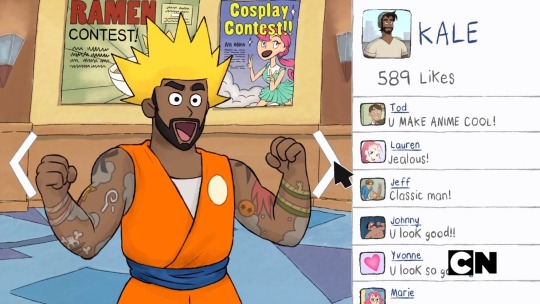

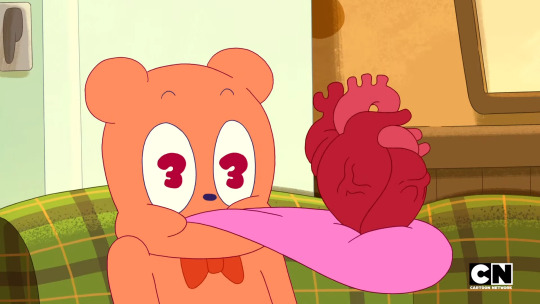




which way, Western Cartoonist? The 4th batch
Giant King Squidward vs. Spongebob & Patrick or Giant Squid vs. Eel? [tweet]
Super Saiyan Gumball or Super Saiyan Kale? [tweet]
Heart on Spongebob’s tongue or heart on Baby Grizz’s tongue? [tweet]
Birdfeed on Ren & Stimpy’s tongues or birdseed on Kelsey’s tongue? [tweet]
Nurse Bazooka or a “mer-kid”? [tweet]
#which way western cartoonist#spongebob#spongebob squarepants#lil squid#dream hoppers#squid#squids#squidward#king squidward#the amazing world of gumball#the pest#the limo#dragon ball#dragon ball z#gumball#we baby bears#we bare bears#wbb#tawog#cartoon network#hanna-barbera cartoons#hanna barbera cartoons#heart#hearts#heart on tongue#mer-kid#craig of the creek#birdseed#birdfeed#ren & stimpy
10 notes
·
View notes
Photo
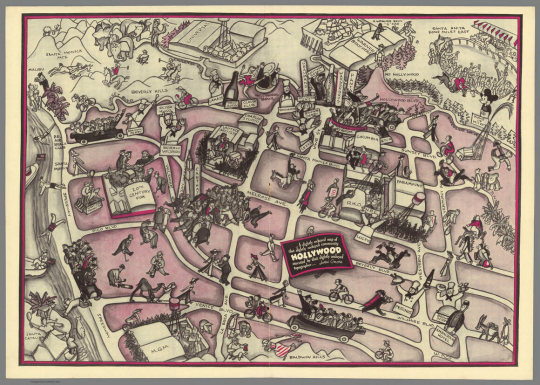
‘Cockeyed’ Map Shows Both Glamour and Margins of 1930s Hollywood
If maps allow our imaginations to travel without care or trouble, then maps of the past do one better: They are time machines into different eras. And pictorial maps, which offer the perspective and subjective detail that mere road maps or city plans don’t, add a bit of couleur locale as extra seasoning. Like this one, of Hollywood in its Golden Age. The humming of 1930s Hollywood street life almost bursts off the page—this is the age of the talkies, after all. A vignette straddling Beverly and Vine sets the scene: A slightly cockeyed map of that slightly cockeyed community, Hollywood, executed by that slightly cockeyed topographer … John Groth. Chicago native Groth (1908–1988) was a cartoonist who became art director of Esquire in his 20s. He would go on to have a brilliant career as a war artist for the Chicago Sun. In 1944, he rode the first Allied jeep into newly liberated Paris. If he’d been any closer to the front, “he would have had to have sat in the Kraut’s lap,” joked Ernest Hemingway. After WWII, he reported from Korea, the Belgian Congo, and Vietnam, among other places. But back in 1937, when he produced this map of Hollywood for Stage magazine, that was all still in the future. The 1930s was a time when Hollywood was dominated by the old studio system. Old? That’s relative. To be fair, many of their names still sound familiar today. There’s 20th Century Fox, on Pico Boulevard, right next to the West Side Tennis Club. Just to the south is MGM, near Venice Boulevard. In between: a fair bit of golfing. And, inexplicably, a Bedouin leading a camel down the boulevard. Paramount can be found on the corner of Western Avenue and Santa Monica Boulevard. Right next door are RKO and NBC. And right across Santa Monica Boulevard is Columbia. Further down Santa Monica, there’s United Artists, a more elaborate operation than Chaplin Studio, right across the street. To the north, on the other side of the Beverly Hills, there’s the gigantic Universal Studios on Cahuenga Boulevard. It’s big enough to contain an entire village—and attract a herd of elephants, coming down the Santa Monica Mountains. Warner Brothers is also on the other side of the mountains—Mount Hollywood, as it so happens; no mention of the HOLLYWOODLAND sign (the LAND was dropped in 1949). It’s also gigantic: They’re filming a sea battle in the back lot. Astride the roof is a Warner Brothers "g-man": a reference to movie detectives, or to the studio’s real-life enforcers? If you liked fine dining, there were worse places to be than Golden Age Hollywood. Halfway between 20th Century Fox and United Artists, there’s the chefs of the Victor Hugo and the Beverly Wilshire, competing for your attention. In the 1930s, Lamaze was a fancy Hollywood restaurant, not a child-birthing technique; right next door were the Trocadero and the Clover Club—all pretty close to the Hollywood Bowl. By the look on his face, the chef at the Lamaze may be going over to the Clover when his shift is over. Other restaurants of note: Perinos, at Wilshire and Western; Levy’s, at Santa Monica and Vine; and Lucey’s, on Melrose. Sprinkled across town were Brown Derby restaurants. Named after the first of the chain, which opened on Wilshire Boulevard in 1926 and was shaped like a semicircular derby hat, the restaurants were a fixture of Golden Age Hollywood. Even outside the glamour of the studios and the high life of fine dining, Hollywood is portrayed as a city of leisure and entertainment. People in bathing suits are diving into the Pacific along the coast-hugging Speedway, from Malibu via the Bel Air Beach Club and Santa Monica all the way down to Santa Catalina Island. Masses of cyclists—yes, cyclists—are cruising down the city’s boulevards and avenues. Could 1930s L.A. have been a cycling paradise? But then what’s with all the horses, not just polo-playing outside of town, but also racing through the center—their riders showing off with their hats in one hand? Surely, this can’t have been a common sight. Buses overflowing with tourists are driving around town, perhaps already then being shown the homes of the stars. Perhaps a star has been spotted near the Carthay; that would explain the rush of onlookers. In the northeast corner, the Santa Anita racetrack is giving punters a run for their money—literally. Closer by, Mickey Mouse waves to passersby from his home on Riverside Drive, not far from a well spouting oil. Huge crowds gather at the American Legion Stadium in the center. Elegant ladies and gentlemen striding around town complete the picture of a city as elegant and attractive as any in the world. Yet Groth wouldn’t be a perceptive—or ‘cockeyed’—observer if he didn’t also look beyond the glamour. Check the bottom right for a Native American couple and their child making their way into Hollywood, looking for opportunity. Two streets down, a Mexican immigrant is doing the same, his donkey laden with wares he will be hoping to sell. And on the corner of La Brea and Venice, Chinese laborers are moving earth right behind the back of a movie director, seated in the classic folding chair, loudspeaker in hand. All these figures are placed near the edge of the map, a textbook demonstration of what it means to be "marginal." This article originally appeared on Big Think, home of the brightest minds and biggest ideas of all time. Sign up for Big Think's newsletter.
https://www.atlasobscura.com/articles/1930s-hollywood-map
1 note
·
View note
Text
Breaking news,Balloon crazed westerners too focused on searching for ufos to realize their empire is on fire
The post is machine translated
Translation is at the bottom
The collective is on telegram
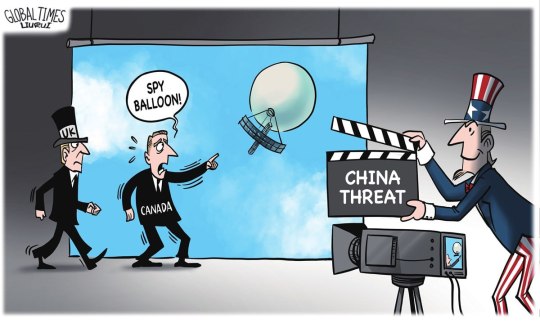
⚠️ LA RIDICOLA PROPAGANDA ANTI-CINESE E ANTI-LOGICA DEGLI STATI UNITI SUI "PALLONI SPIA" | TRA "GUERRA FREDDA", ALIENI E DECADENZA DI UN IMPERO ⚠️
🇨🇳 Liu Rui, Fumettista del "环球时报", tabloid di proprietà del Partito Comunista Cinese, ha pubblicato questa simpatica ma anche emblematica vignetta, che rappresenta nel miglior modo possibile l'assurdità e la ridicolaggine di questa sensazionalistica e becera propaganda statunitense sui "palloncini", atta ad intensificare le tensioni con la Cina e a giustificare l'ottenimento di un Budget per la Spesa Militare sempre più alto.
🤔 Tralasciando l'ironia, come scritto sul Collettivo Shaoshan agli inizi di questa situazione arlecchinesca, perché una Super-Potenza Spaziale (Satelliti) e Militare, che produce i migliori droni da ricognizione al Mondo, dovrebbe "spiare gli USA" utilizzando un gigantesco e perfettamente visibile pallone meteorologico? 😂
❔ Ma ieri, vedendo ciò è successo alla Casa Bianca, ho compreso che questa situazione è talmente grottesca e ridicola da non poter essere trattata seriamente al 100% [però state tranquilli, arriverà in futuro un'analisi più seria e approfondita sulla questione] 😅
👽 L'altroieri, Karine Jean-Pierre - Portavoce della Casa Bianca - ha letteralmente affermato che "non c'è nessuna prova di alieni o attività extraterrestre [🤪] legata ai recenti abbattimenti di oggetti nei cieli degli Stati Uniti" - MA VA? 😵💫
📄 Come ha scritto Clara Statello in questo post: "A furia di negare la realtà storico-sociale e riempire la testa dei popoli occidentali di spazzatura pseudo-culturale, di azzerare la critica e negare la razionalità, sono costretti a specificare cos'è reale e cosa no. Vivono in una puntata di South Park, non nella realtà" ✅️
🌸 Iscriviti 👉 @collettivoshaoshan
⚠️ US RIDICULOUS ANTI-CHINESE AND ANTI-LOGIC PROPAGANDA ABOUT "SPY BALLOONS" | BETWEEN "COLD WAR", ALIENS AND DECADENCE OF AN EMPIRE ⚠️
🇨🇳 Liu Rui, Cartoonist of the "环球时报", tabloid owned by the Communist Party of China, has published this nice but also emblematic cartoon, which represents in the best possible way the absurdity and ridiculousness of this sensationalist and vulgar US propaganda on " balloons", aimed at intensifying tensions with China and at justifying the achievement of an ever higher Military Spending Budget.
🤔 Leaving aside the irony, as written on the Shaoshan Collective at the beginning of this harlequin situation, why should a Space (Satellites) and Military Super-Power, which produces the best reconnaissance drones in the World, should "spy on the USA" using a gigantic and perfectly visible weather balloon? 😂
❔ But yesterday, seeing what happened in the White House, I understood that this situation is so grotesque and ridiculous that it can't be treated 100% seriously [but don't worry, a more serious and in-depth analysis of the matter will come in the future] 😅
👽 The day before yesterday, Karine Jean-Pierre - White House Spokesperson - literally stated that "there is no evidence of aliens or extraterrestrial activity [🤪] linked to the recent shooting down of objects in the skies of the United States" - BUT GO? 😵 💫
📄 As Clara Statello wrote in this post: "By dint of denying historical-social reality and filling the heads of Western peoples with pseudo-cultural rubbish, of eliminating criticism and denying rationality, they are forced to specify what is real and what not. They live in an episode of South Park, not in reality" ✅️
🌸 Subscribe 👉 @collettivoshaoshan
#socialism#china#italian#translated#china news#communism#collettivoshaoshan#marxism leninism#marxist leninist#marxist#marxism#usa news#chinese spy balloon#spy balloon#ufo sightings#news#diplomacy
0 notes
Text
Common Sorts of Anime
There are a lot of distinct facets of anime, but a single common theme is 'Faito', a character who represents moral values. In well-liked anime, 'Faito' is a strong personal with a pure heart, which is a symbol of Japanese nationwide ideals. By way of 'Faito', anime creators can deposit nationwide ideals, both traditional and present day, into the minds of viewers. In addition, animes can also highlight social problems, this kind of as severe shyness.
จักรพรรดิเทพสูงสุด of anime began about 1900, when Japanese filmmakers attempted their hand at animation, much like those in America and Europe. Osamu Tezuka, who is regarded the 'Godfather of Anime,' was inspired by American cartoonists, particularly Walt Disney, and was inspired by Max Fleischer's work. Although contemporary audiences are accustomed to seeing cartoon characters with dangling limbs, anime characters had eyes that are reminiscent of cartoons before Globe War II.
Whilst shoujo anime are often aimed at a younger audience, some are far more grownup in nature. Some are more violent than other individuals and deal with sexual themes, even though other individuals are a lot more contemplative. Even so, shoujo anime are often much more suited for a female audience. The sexual articles of shoujo anime tends to appeal to younger viewers. In contrast, shoujo anime are aimed at young females in between the ages of ten and 18.
The reputation of anime has grown exponentially in excess of the many years. Snow White and the 7 Dwarfs came to the U.S. in 1937, and Momotaro's Divine Sea Warriors grew to become the very first feature-length anime movie in Japan. Since then, anime has become a rewarding business for numerous Japanese producers, and it truly is not hard to see why. There are so numerous sorts of anime, but which a single is the most well-liked? Let us check out some of them!
As talked about, anime is really distinct from cartoons. Whilst manga is much more artistic and consists of original material, anime is an adaptation of one more story. The authentic work of the mangaka is considered to be a lot more well-liked. However, the unique storylines are not often created into anime, and they are cheaper and safer investments. You can even acquire an original manga guide based mostly on an anime adaptation. This way, you do not have to be concerned about paying 1000's of dollars for a novel.
The recognition of anime has been expanding in western nations given that the 1970s. The acceptance of a movie like Akira paved the way for mainstream anime. It depicted a post-apocalyptic potential and was legally distributed in the U.S., breaking the language barrier. Popular anime films have because grow to be staples in well-known culture, which includes Dragon Ball Z and Sailor Moon. Numerous individuals are amazed at the recognition of anime.
Whilst most anime series are aimed at kids, there are several that appeal to grownups as properly. Although these displays might include some cartoon material that is not proper for young children, they are usually nevertheless manufactured with a wide assortment of articles and interests in thoughts. They often reflect aspects of Japanese culture that are not typically incorporated in American cartoons. So, parents need to consider a seem ahead of allowing their kids to watch anime. So what can make an anime movie distinct than a cartoon?
1 note
·
View note
Text
Why are white elites afraid of Black babies?
What the latest controversial statements by the UK’s Prince William reveal about white angst.
Patrick Gathara

Communications consultant, writer, and award-winning political cartoonist based in Nairobi.
Published On 1 Dec 2021
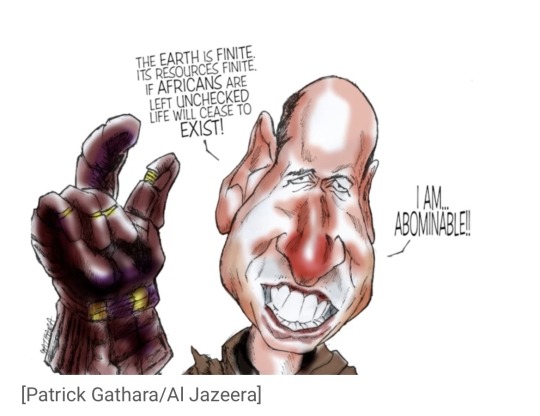
[Patrick Gathara/Al Jazeera]
The second in line to the British throne, Prince William, has once again caused an uproar by blaming population growth in Africa for the declining fortunes of the continent’s wildlife. Many have pointed out the hypocrisy of a father of three demonising African households for having too many babies.
Others have noted that the United Kingdom is much more densely populated than any part of Africa and that British hunters and colonial settlers have been responsible for the savage decimation of animals. Not to mention the effect of global warming and climate change, majorly caused by William’s ancestors, countrymen and neighbours, which may endanger between 25 and 40 percent of mammal species in national parks in Africa.
However, little has been said about the historic discomfort of white elites with Black fertility and Black babies. It was the second time William was complaining about the continent’s rising population having previously raised the issue in 2017. That same year, French President Emmanuel Macron, who also likes to talk about African birthrates, blamed the continent’s “civilisational” problems on nations that “have seven or eight children per woman”.
And of course, there were the perhaps not entirely surprising allegations last year by William’s own sister-in-law, Meghan, an African American woman, that some in the royal family were concerned about the possibility of her and Prince Harry’s son not being the desired royal colour.
The Western angst about population growth is often presented in absolutist terms: “The fundamental point of The Population Bomb is still self-evidently correct, we believe: the capacity of Earth to produce food and support people is finite” wrote Paul and Anne Ehrlich in 2009 about their influential 1968 book on the dangers of overpopulation. They reiterated their position that “there are only two kinds of solutions to the population problem. One is a ‘birthrate solution’, in which we find ways to lower the birthrate. The other is a ‘death rate solution’, in which ways to raise the death rate – war, famine, pestilence – find us.”
However, if they could collect all the infinity stones and snap their fingers – just like Thanos, the villain of Marvel’s Avengers: Infinity War – it is unlikely they would, like him, erase populations equally across the globe to achieve the optimum number of people Earth could supposedly comfortably hold. It is telling that the troubling, apocalyptic descriptions in The Population Bomb are about teeming misery in non-white countries such as India, not in Europe or North America.
In the same way, the language of environmental and humanitarian concern is employed today to disguise darker fears. In contrast to Africa’s youthful and growing population, and despite William’s personal efforts, the population of Europe is ageing and stagnating. Within a century, the number of Africans could more than triple to 4.5 billion, accounting for two in every five human beings, while Europeans will likely decline by about a hundred million. By 2100, there could well be seven Africans for every European.
With the rise of Asian giants like China and India already supercharging white racist fears (and partly driving the resurgence of right-wing extremism), the prospect of Europeans taking a back seat to Africans as well is undoubtedly adding fuel to the fire.
In truth, as Kenyan ecologist, Dr Mordecai Ogada, co-author of The Big Conservation Lie, which focused on the policy problems and prejudices underlying wildlife conservation in the country, says, “the absolute numbers of people in Africa are far from being a problem for our environment more so because of the very light footprint of the people here”. He points out that many Indigenous communities have little incentive to harm the environment which they directly rely on to fulfil essential needs.
And when it comes to the environment, many Western do-gooders “look at human numbers instead of human behaviour”. It is the same flawed argument that claims African communities that have lived with wildlife for millennia are the real threat, while Westerners who have driven much of their own wildlife to extinction, have the answers.
The talk of overpopulation also feeds into a narrative that seeks to completely exonerate the West from the problems facing Africa. Africa – the tale they would like to tell goes – is poor and starving because it has too many Africans who are very bad at running their own affairs without murdering each other, and incapable of managing the natural resources and wildlife the continent is blessed with. Sound familiar? It was the justification for the “civilising mission” that was the cover for the brutal European plunder of the continent.
The legacy of colonialism and its genocides, displacements and murders; the trade and financial systems that continue to milk the continent for the benefit of outsiders and at the expense of locals; the interventions to prop up murderous, kleptocratic regimes; and the destruction of the global environment all pale into insignificance when compared with the misfortune of actually hosting Africans. Like his ancestors before him, this is what William considers the continent’s – and the planet’s – true tragedy.
The views expressed in this article are the author’s own and do not necessarily reflect Al Jazeera’s editorial stance.
20 notes
·
View notes
Photo
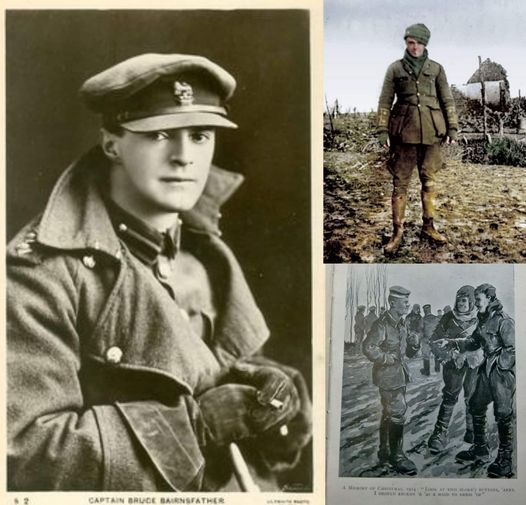
Although many myths have arisen over the 1914 Christmas truce on the Western Front, the first-hand accounts can provide us a wealth of information.
One of the eyewitnesses was British cartoonist-turned-officer Bruce Bairnsfather, who recalled the scene in his 1916 book "Bullets & Billets" - it is a long passage, but well worth the read, as it gives a perfect picture of how the truce began in one particular sector of the line that night:
~*~
The dawn of the 24th brought a perfectly still, cold, frosty day. The spirit of Christmas began to permeate us all; we tried to plot ways and means of making the next day, Christmas, different in some way to others. Invitations from one dug-out to another for sundry meals were beginning to circulate. Christmas Eve was, in the way of weather, everything that Christmas Eve should be.
.... The day had been entirely free from shelling, and somehow we all felt that the Boches [Germans], too, wanted to be quiet. There was a kind of an invisible, intangible feeling extending across the frozen swamp between the two lines, which said "This is Christmas Eve for both of us—something in common."
About 10 p.m. I made my exit from the convivial dug-out on the left of our line and walked back to my own lair. On arriving at my own bit of trench I found several of the men standing about, and all very cheerful. There was a good bit of singing and talking going on, jokes and jibes on our curious Christmas Eve, as contrasted with any former one, were thick in the air. One of my men turned to me and said:
"You can 'ear 'em quite plain, sir!"
"Hear what?" I inquired.
"The Germans over there, sir; 'ear 'em singin' and playin' on a band or somethin'."
I listened;—away out across the field, among the dark shadows beyond, I could hear the murmur of voices, and an occasional burst of some unintelligible song would come floating out on the frosty air. The singing seemed to be loudest and most distinct a bit to our right. I popped into my dug-out and found the platoon commander.
"Do you hear the Boches kicking up that racket over there?" I said.
"Yes," he replied; "they've been at it some time!"
"Come on," said I, "let's go along the trench to the hedge there on the right—that's the nearest point to them, over there."
So we stumbled along our now hard, frosted ditch, and scrambling up on to the bank above, strode across the field to our next bit of trench on the right. Everyone was listening. An improvised Boche band was playing a precarious version of "Deutschland, Deutschland, uber Alles," at the conclusion of which, some of our mouth-organ experts retaliated with snatches of ragtime songs and imitations of the German tune.
Suddenly we heard a confused shouting from the other side. We all stopped to listen. The shout came again. A voice in the darkness shouted in English, with a strong German accent, "Come over here!" A ripple of mirth swept along our trench, followed by a rude outburst of mouth organs and laughter.
Presently, in a lull, one of our sergeants repeated the request, "Come over here!"
"You come half-way—I come half-way," floated out of the darkness.
"Come on, then!" shouted the sergeant. "I'm coming along the hedge!"
"Ah! but there are two of you," came back the voice from the other side.
Well, anyway, after much suspicious shouting and jocular derision from both sides, our sergeant went along the hedge which ran at right-angles to the two lines of trenches. He was quickly out of sight; but, as we all listened in breathless silence, we soon heard a spasmodic conversation taking place out there in the darkness.
Presently, the sergeant returned. He had with him a few German cigars and cigarettes which he had exchanged for a couple of Maconochie's and a tin of Capstan, which he had taken with him. The séance was over, but it had given just the requisite touch to our Christmas Eve—something a little human and out of the ordinary routine.
After months of vindictive sniping and shelling, this little episode came as an invigorating tonic, and a welcome relief to the daily monotony of antagonism. It did not lessen our ardour or determination; but just put a little human punctuation mark in our lives of cold and humid hate. Just on the right day, too — Christmas Eve! But, as a curious episode, this was nothing in comparison to our experience on the following day.
On Christmas morning I awoke very early, and emerged from my dug-out into the trench. It was a perfect day. A beautiful, cloudless blue sky. The ground hard and white, fading off towards the wood in a thin low-lying mist. It was such a day as is invariably depicted by artists on Christmas cards—the ideal Christmas Day of fiction.
"Fancy all this hate, war, and discomfort on a day like this!" I thought to myself. The whole spirit of Christmas seemed to be there, so much so that I remember thinking, "This indescribable something in the air, this Peace and Goodwill feeling, surely will have some effect on the situation here to-day!" And I wasn't far wrong; it did around us, anyway, and I have always been so glad to think of my luck in, firstly, being actually in the trenches on Christmas Day, and, secondly, being on the spot where quite a unique little episode took place.
Everything looked merry and bright that morning—the discomforts seemed to be less, somehow; they seemed to have epitomized themselves in intense, frosty cold. It was just the sort of day for Peace to be declared. It would have made such a good finale. I should like to have suddenly heard an immense siren blowing. Everybody to stop and say, "What was that?" Siren blowing again: appearance of a small figure running across the frozen mud waving something. He gets closer—a telegraph boy with a wire! He hands it to me. With trembling fingers I open it: "War off, return home.—George, R.I." Cheers! But no, it was a nice, fine day, that was all.
Walking about the trench a little later, discussing the curious affair of the night before, we suddenly became aware of the fact that we were seeing a lot of evidences of Germans. Heads were bobbing about and showing over their parapet in a most reckless way, and, as we looked, this phenomenon became more and more pronounced.
A complete Boche figure suddenly appeared on the parapet, and looked about itself. This complaint became infectious. It didn't take "Our Bert" long to be up on the skyline (it is one long grind to ever keep him off it). This was the signal for more Boche anatomy to be disclosed, and this was replied to by all our Alf's and Bill's, until, in less time than it takes to tell, half a dozen or so of each of the belligerents were outside their trenches and were advancing towards each other in no-man's land.
I clambered up and over our parapet, and moved out across the field to look. Clad in a muddy suit of khaki and wearing a sheepskin coat and Balaclava helmet, I joined the throng about half-way across to the German trenches.
It all felt most curious: here were these sausage-eating wretches, who had elected to start this infernal European fracas, and in so doing had brought us all into the same muddy pickle as themselves.
This was my first real sight of them at close quarters. Here they were—the actual, practical soldiers of the German army. There was not an atom of hate on either side that day; and yet, on our side, not for a moment was the will to war and the will to beat them relaxed. It was just like the interval between the rounds in a friendly boxing match. The difference in type between our men and theirs was very marked.
There was no contrasting the spirit of the two parties. Our men, in their scratch costumes of dirty, muddy khaki, with their various assorted headdresses of woollen helmets, mufflers and battered hats, were a light-hearted, open, humorous collection as opposed to the sombre demeanour and stolid appearance of the Huns in their grey-green faded uniforms, top boots, and pork-pie hats.
The shortest effect I can give of the impression I had was that our men, superior, broadminded, more frank, and lovable beings, were regarding these faded, unimaginative products of perverted kulture as a set of objectionable but amusing lunatics whose heads had got to be eventually smacked.
"Look at that one over there, Bill," our Bert would say, as he pointed out some particularly curious member of the party.
I strolled about amongst them all, and sucked in as many impressions as I could. Two or three of the Boches seemed to be particularly interested in me, and after they had walked round me once or twice with sullen curiosity stamped on their faces, one came up and said "Offizier?" I nodded my head, which means "Yes" in most languages, and, besides, I can't talk German.
These devils, I could see, all wanted to be friendly; but none of them possessed the open, frank geniality of our men. However, everyone was talking and laughing, and souvenir hunting.
I spotted a German officer, some sort of lieutenant I should think, and being a bit of a collector, I intimated to him that I had taken a fancy to some of his buttons.
We both then said things to each other which neither understood, and agreed to do a swap. I brought out my wire clippers and, with a few deft snips, removed a couple of his buttons and put them in my pocket. I then gave him two of mine in exchange.
Whilst this was going on a babbling of guttural ejaculations emanating from one of the laager-schifters, told me that some idea had occurred to someone.
Suddenly, one of the Boches ran back to his trench and presently reappeared with a large camera. I posed in a mixed group for several photographs, and have ever since wished I had fixed up some arrangement for getting a copy.
No doubt framed editions of this photograph are reposing on some Hun mantelpieces, showing clearly and unmistakably to admiring strafers how a group of perfidious English surrendered unconditionally on Christmas Day to the brave Deutschers.
Slowly the meeting began to disperse; a sort of feeling that the authorities on both sides were not very enthusiastic about this fraternizing seemed to creep across the gathering. We parted, but there was a distinct and friendly understanding that Christmas Day would be left to finish in tranquillity.
The last I saw of this little affair was a vision of one of my machine gunners, who was a bit of an amateur hairdresser in civil life, cutting the unnaturally long hair of a docile Boche, who was patiently kneeling on the ground whilst the automatic clippers crept up the back of his neck.
Historia Obscurum
17 notes
·
View notes